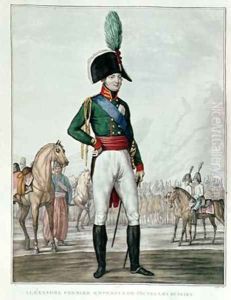Charles Francois Gabriel Levachez Paintings
Charles François Gabriel Levachez was a French engraver born in 1753. He was known for his landscape engravings and book illustrations that captured the aesthetic sentiments of late 18th-century France. Levachez's work was part of the Rococo movement that preceded the more severe and formal Neoclassical style that gained prominence towards the end of his career.
Levachez was trained in the art of engraving in Paris and soon established himself as a skilled craftsman in this medium. His engravings were often based on the works of contemporary painters, and he collaborated with a number of artists, producing engravings that were used as illustrations in books and standalone artworks.
Throughout his career, Levachez worked on various prestigious projects, including the illustration of travel books and the reproduction of landscape paintings. His engravings are characterized by fine detail and sensitivity to the nuances of light and shadow, a testament to his mastery over the engraver's burin. His works were capable of conveying the texture and atmosphere of the scenes he depicted, from tranquil pastoral landscapes to the grandeur of historical architecture.
Despite his obvious skill and contributions to French art, Levachez did not gain the same level of fame as some of his contemporaries. Nevertheless, his engravings were collected and appreciated by art enthusiasts of his time, and they continue to be studied by art historians for their technical proficiency and charm.
Charles François Gabriel Levachez's life is less documented than that of some of his peers, and as such, details about his personal life are scarce. He passed away in 1812, leaving behind a body of work that provides insight into the artistic and cultural preoccupations of France during a period marked by significant social and political change. His engravings remain valuable for their beauty and historical significance, capturing the spirit of an era that saw the transition from the opulent Rococo to the more restrained Neoclassicism, and eventually to the rise of Romanticism.
